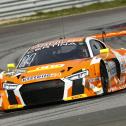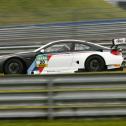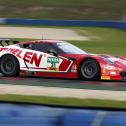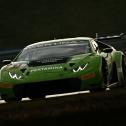Pressekontakt
ADAC e.V.
Oliver Runschke
Motorsport- und Klassik-Kommunikation
Tel.: +49 89 7676 6965
Mobil: +49 171 555 6236
E-Mail: oliver.runschke@adac.de
Kay-Oliver Langendorff
Leiter Partnerschaften, Kooperationen & Sponsoring
Leiter Kommunikation Motorsport & Klassik
Tel.: +49 (0)89-7676 6936
Mobil: +49 (0)171-555 5936
E-Mail: kay.langendorff@adac.de
13.04.2016 - ADAC GT Masters
2016 ADAC GT Masters: These are the new super sports cars
- Most teams will field new GT3 models
- The Audi R8 is the vehicle of choice among teams in the 2016 line-up
- Lamborghini Huracán has already raced in ADAC GT Masters
Munich: The tenth season of the ADAC GT Masters is characterized by one thing in particular – a plethora of new vehicle models. Six supercars – the Audi R8, BMW M6, Corvette C7, Lamborghini Huracán, Mercedes-AMG and Porsche 911 – will be jockeying for position on the grid as they tackle their first full season in the ADAC GT Masters. The new models will be joined by well-known supercars like the Bentley Continental, Nissan GT-R and Corvette Z06.R in the season opener at the Motorsport Arena Oschersleben (15th-17th April). Once again in 2016, all ADAC GT Masters races will be broadcast live and in full by SPORT1 on free-to-air TV and online via a free live stream at: adac.de/gt-masters.
Audi R8
2016 will be the first full season for the second-generation Audi R8 and also its premiere in the ADAC GT Masters. The Audi is the most common vehicle on the grid with ten examples of the car, spread across six teams.The engineers at quattro GmbH in Neckarsulm, where the R8 is manufactured, have done a fine job. The chassis, consisting of an aluminium monocoque with carbon-fibre structural components and steel roll cage, weighs 30 kg less than its successful predecessor. The six-speed transmission with paddle shifts has also been completely redesigned and is now 25 kg lighter. On the other hand, the space frame’s torsional rigidity has been increased by 39 percent. The 585-bhp naturally aspirated V10 engine only needs servicing every 20,000 kilometres, which is more than 130 ADAC GT Masters races. As regards aerodynamics, drag has been reduced by 20 percent, thanks partly to a subfloor which is now fully enclosed for the first time. This has led to a 6.5 percent increase in top speed with the same engine output and same fuel consumption. The Audi meets the crash test requirements for Le Mans prototypes thanks to its modified structure at the front end and newly introduced CFRP crash elements to the rear.
BMW M6
BMW have made the most significant changes of all the new race cars in the 2016 ADAC GT Masters. The new BMW M6 replaces the BMW Z4 GT3 which has won twelve races.Visually, the BMW M6 has nothing in common with its predecessor, the Z4. The large coupé is some 60 centimetres longer than the compact convertible. However, despite its larger dimensions, the M6 weighs less than 1,300 kg. The low position of the drive train further reduces the car’s centre of gravity, thus improving performance. The transaxle ensures that weight is perfectly distributed between front and rear axles. The chassis has been optimized aerodynamically in the BMW wind tunnel. BMW are also ringing the changes in the engine department with their current GT3 racing car. While the Z4 was naturally aspirated, the M6 utilises twin-turbo technology from its production counterpart. The only modifications made to the 4.4-litre V8, which produces approximately 585 bhp, were to oil supply and intercooling. The BMW M6 was subjected to an extensive test programme at different racetracks throughout 2015. Experienced drivers played their part in getting the important basic work on setup just right.
Corvette C7
Corvette and the ADAC GT Masters – a connection that goes back ten years, but a new racing car will be deployed in 2016 when the successful Z06.R is replaced by the C7.The development of Callaway Competition’s new Corvette in Leingarten started back in the middle of 2014 when initial component designs were produced on the CAD system. The design of the car’s chassis was finalised by the end of the year and construction began in the spring of 2015. The chassis, revised lower wishbones, the upper half of the rear of the vehicle and taillights were taken from the production car. The naturally aspirated V8 comes from its predecessor, the Z06.R, but with minor changes. All other parts have been re-designed and manufactured using milled aluminium for the majority of the technical parts. “We wanted this new development to set another milestone in our company’s history by constructing a future-proof vehicle, putting it into production and by also racing it in 2016,” said Giovanni Ciccone of Callaway Competition. “We are a small, privately owned team, so this sort of project is particularly challenging, as we do not have at our disposal all the financial and human resources that you would find in a full-blown car factory.”
Lamborghini Huracán
The Lamborghini Huracán is the only one of the six new vehicles in the ADAC GT Masters that has already raced in the Super Sports Car League.The Lamborghini Huracán’s CV could not have been more impressive for any ADAC GT Masters teams interested in taking a look. Grasser Racing arrived as guest starters at the Red Bull Ring for the second race weekend of the 2015 season with a brand new version of the Lamborghini Squadra Corse super sports car and immediately won the second race. Four teams have entered the Lambo in the 2016 season, making it the second most popular vehicle after the Audi R8. The hallmark of the Huracán is its hybrid chassis made of aluminium and carbon fibre. The vehicle’s aerodynamics have been optimized to improve air flow and ensure maximum grip and traction. The Huracán is powered by a directly injected V10 engine with more than 500 bhp.
Mercedes-AMG
The new Mercedes-AMG has big boots to fill. Its predecessor, the SLS AMG won the ADAC GT Masters drivers’ standings in 2012 and 2015.That the Mercedes-AMG also has the potential to become a winner can be seen at first glance. The wider body, large air intakes, the diffuser and huge rear wing emphasize its dynamic look. The front view of the car is striking. The new Panamericana radiator grille with vertical chrome struts is reminiscent of the Mercedes-Benz 300 SL which won the famous Carrera Panamericana endurance race across Mexico in 1952. The grille is more convex at the top than at the bottom – designers refer to this as a ‘shark nose’. The bodywork, bonnet, doors, front wings, front and rear aprons, sides, side skirts, diffuser, boot lid and rear wing are made mostly of carbon fibre in order to reduce vehicle weight as much as possible. An old friend provides the necessary power. Mercedes-AMG engineers have taken the 550-bhp 6.3-litre V8 engine from the successful SLS AMG.
Porsche 911
Porsche will start the ADAC GT Masters season with a new variant of its iconic 911 sports car. The new model is based on the Series 991 and takes not just its visual cues from the successful 911 RSR deployed in the world sports car championship.The new 911, which three teams will field in the 2016 ADAC GT Masters, is driven as usual by a four-litre six-cylinder boxer engine which is more or less identical to the 911 GT3 RS’s production counterpart and has direct fuel injection for the first time. Compared to its predecessor, the 500-bhp naturally aspirated engine has much improved power delivery and a wider, more useful rev range. The rear-mounted engine puts down its power to the rear wheels by means of a six-speed sequential constant-mesh gearbox. The 911’s braking system has also been further optimized. Stopping power at the front is provided by six-piston aluminium monobloc racing calipers with internally ventilated, slotted steel brake discs of 380 mm diameter. The rear axle features four-piston calipers and 372-mm discs. Judicious use of body parts, components and suspension made of lightweight materials has made it possible for engineers to considerably lower the Porsche’s centre of gravity even more when compared to the previous model. The roof, front bonnet and front end, wings, doors, sides, rear scuttle and rear engine cover are all made of CFRP.





